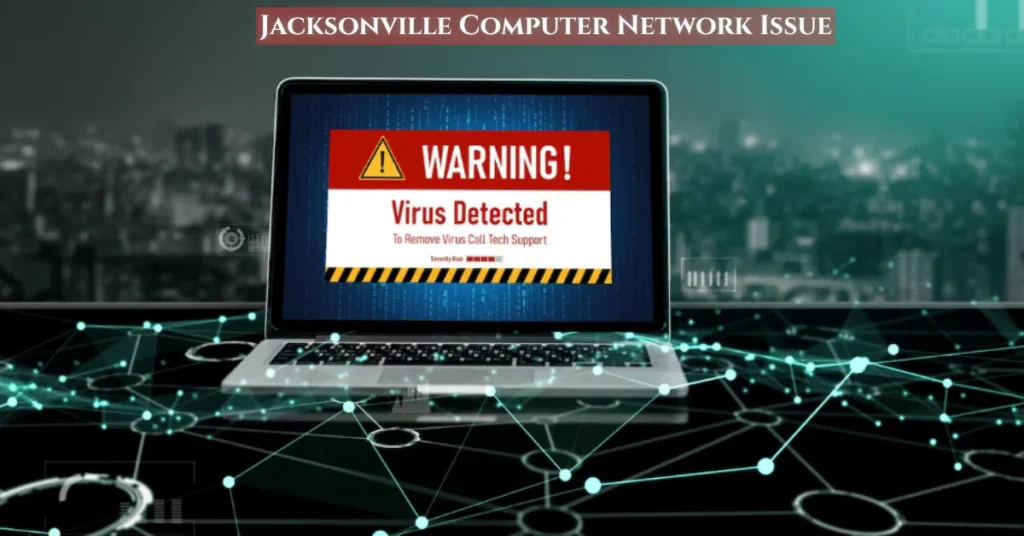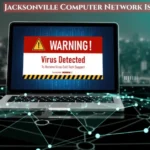Introduction
Imagine waking up in a city buzzing with business, hospitals, schools, and digital ambition—only to find the digital heartbeat of the city crashing. That was the scene in Jacksonville when its computer network hit a serious snag. The Jacksonville Computer Network Issue wasn’t just a technical glitch—it was a full-blown crisis. Let’s unpack how it started, who it affected, and how the city is climbing back stronger than ever.
Why Jacksonville’s Tech Scene Matters
Jacksonville isn’t just Florida’s largest city by area—it’s a rising digital hub. From healthcare giants to fintech firms, its reliance on interconnected systems is massive. That’s why even the slightest disruption can cause a domino effect citywide.
Overview of the Network Crisis
The issue came to light when users across the city started experiencing major slowdowns, loss of connectivity, and system failures. At first, it seemed isolated, but quickly escalated into a systemic failure.
The Roots of the Problem
Outdated Infrastructure
Many of Jacksonville’s systems were built years ago and hadn’t been upgraded to meet the needs of a fast-growing city. Legacy networks just couldn’t keep up.
Insufficient Cybersecurity Measures
Security tools were in place, but not at the level needed to fend off modern threats. Gaps in monitoring and outdated firewalls became easy entry points.
Overburdened Systems Due to Population Growth
Jacksonville’s booming population meant increased demand on public services and bandwidth. Without scalable infrastructure, systems buckled under the load.
Key Areas Affected
Healthcare Systems and Data Delays
Hospitals experienced delays in accessing patient data. ERs were forced to switch to manual entries, slowing down treatment in critical situations.
Educational Institutions Struggling Online
Students and teachers couldn’t access e-learning portals. Exams were postponed, and remote classes dropped out unexpectedly.
Disrupted Communication in Business Sectors
From small businesses to large corporations, everyone felt the pinch. Orders got delayed, customer communication broke down, and remote teams lost sync.
The First Signs of the Network Collapse
Sluggish Connectivity Across Citywide Networks
City-wide services like public Wi-Fi, smart traffic systems, and even library networks began lagging or shutting down altogether.
Emergency Services Facing Downtime
911 dispatch and real-time police communications suffered. While backup systems helped, response times were still affected.
Public Complaints and Media Attention
Social media exploded with complaints. Local news picked up the story, urging city leaders to act fast.
The Response from Authorities
Immediate Containment Measures
Emergency IT teams were deployed to isolate and identify failing nodes. Temporary firewalls and access controls were implemented.
Public Communication Strategies
The city released regular updates via media and social platforms to prevent panic and inform citizens of recovery plans.
Initial Technical Assessments
Expert analysts traced the breakdown to a mix of infrastructure overload and potential external threats. A formal investigation kicked off.
Cybersecurity Concerns Amid the Outage
Potential Data Breaches
There were real fears that sensitive citizen data might have been accessed. Investigations showed phishing attempts rose during the outage.
How Hackers Exploited Vulnerabilities
Cyber attackers took advantage of exposed ports and outdated patches. Luckily, no large-scale data leak was confirmed.
Role of IT Security Teams
City IT and private security firms worked overtime, deploying intrusion detection systems and auditing logs for unusual activity.
Collaboration Between Public and Private Sectors
Telecom Companies Stepping In
Major ISPs offered emergency bandwidth and diagnostic help. Some even waived service fees during the crisis.
Government Contracts with Tech Firms
The city brought in big names from the tech world to assess damage, rebuild infrastructure, and implement permanent solutions.
Local Startups Offering Solutions
Jacksonville’s startup scene also rose to the challenge, offering everything from cloud storage to pop-up connectivity hubs.
Tech Solutions Deployed
Infrastructure Upgrades
High-speed fiber optics replaced aging copper lines. Routers and servers were modernized.
AI-Powered Network Monitoring
Real-time AI tools now track usage spikes, detect threats, and alert technicians before small issues turn into disasters.
Backup Systems and Fail-Safes
New cloud-based backups ensure that even in worst-case scenarios, systems can recover quickly and smoothly.
Community and Business Adaptation
Remote Work Adjustments
Companies shifted to hybrid work setups with stronger VPNs, data encryption, and backup communication platforms.
Emergency Tech Training for Employees
Workshops helped staff understand how to work offline when needed, protect devices from threats, and maintain productivity.
Alternative Internet Solutions (e.g., Satellite)
Some areas explored using Starlink and other satellite ISPs to avoid dependence on local networks entirely.
Lessons Learned from the Jacksonville Computer Network Issue
Importance of Proactive Maintenance
Regular upgrades are cheaper than total disaster recovery. Jacksonville now schedules audits and updates quarterly.
Investing in Resilience and Scalability
New systems are built to grow with the city. Modular, scalable, and designed to flex with usage spikes.
Transparency and Public Trust
By staying honest and updating citizens consistently, the city rebuilt trust—something even more valuable than tech.
Looking Ahead: The Rebuilding Phase
Long-Term Tech Investments
Jacksonville plans to invest over $50 million in digital infrastructure by 2027.
Focus on Education and Awareness
From public workshops to school tech literacy programs, digital education is a big part of the recovery.
Building a Future-Ready Jacksonville
With smart grids, AI traffic lights, and a stronger internet backbone, Jacksonville is setting the bar for digital cities of the future.
conclusion
The Jacksonville Computer Network Issue was a wake-up call—but not a defeat. With smart planning, collaboration, and community resilience, the city turned crisis into opportunity. The journey from outage to innovation proves that even a major tech stumble can lead to a future built on stronger, smarter foundations.
ALSO READ: Tatasec Business Insights Archives: Insight, Action, Growth
FAQs
What caused the Jacksonville Computer Network Issue?
A mix of outdated infrastructure, cybersecurity lapses, and increased digital demand due to population growth.
How did the network failure affect businesses?
Businesses faced communication breakdowns, disrupted operations, and financial losses due to system downtime.
What steps are being taken to prevent future outages?
Jacksonville is investing in AI monitoring, modern hardware, cybersecurity upgrades, and public-private partnerships.
Is Jacksonville’s network safe now?
Yes, with multiple safeguards, backups, and real-time monitoring systems in place, the network is more secure than ever.
Can this happen in other cities too?
Absolutely. Cities with outdated infrastructure and poor cyber hygiene are vulnerable. Jacksonville’s recovery offers a blueprint for others.






